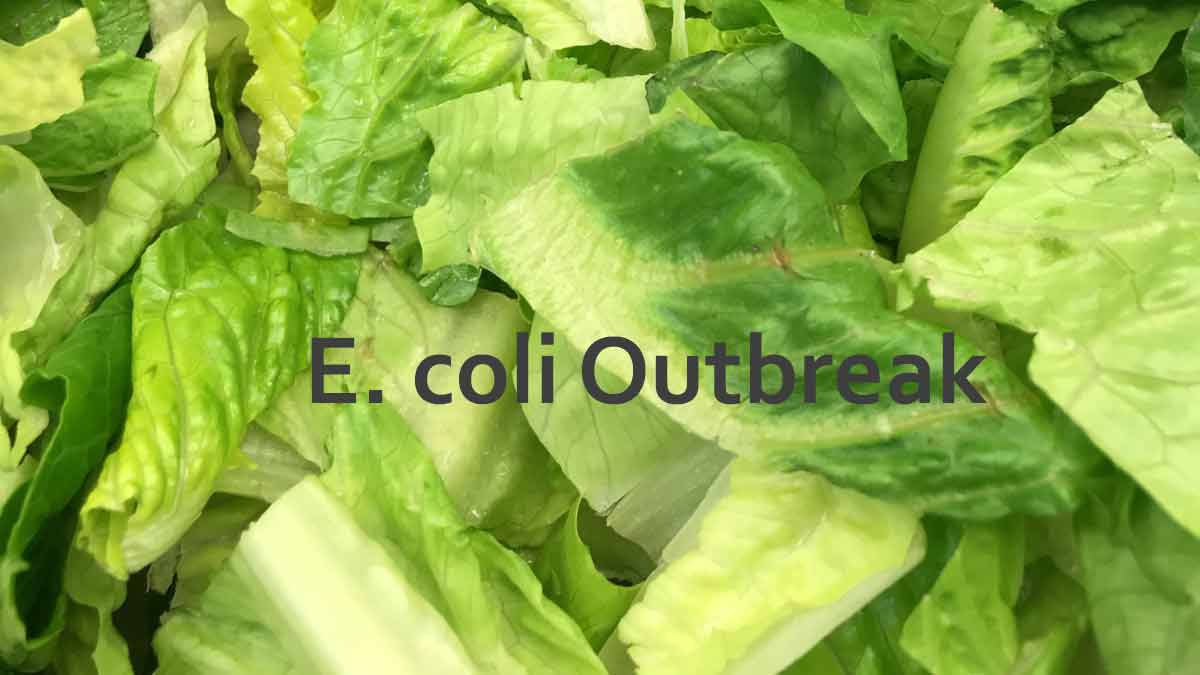After discovering a new romaine lettuce E. coli outbreak, the CDC is warning consumers, restaurants and retailers to throw away all romaine lettuce. Thirty-two people in 11 states have been sickened by the outbreak strain of Shiga toxin-producing E. coli O157:H7. One person has developed people developed hemolytic uremic syndrome (HUS) a life-threatening form of kidney failure that affects about 10 percent of people with E. coli infections. Illnesses have also been reported in Canada.
Centers for Disease Control and Prevention’s (CDC’s) dire warning comes in the wake of the deadly E.coli outbreak linked to romaine lettuce grown in Yuma, AZ earlier this year. More than 200 people were sickened in that outbreak and five people died. The U.S. Food and Drug Administration (FDA) was never able to identify a common grower, supplier, distributor, or brand of romaine lettuce in that outbreak. Only the region in which it was grown. So, the CDC and FDA advised consumers not to eat and restaurants and retailers not to sell romaine lettuce unless they knew it was grown elsewhere. But consumers discovered that “state of origin” information doesn’t appear on all forms of romaine sold at grocery stores. Things got more confusing when some stores issued recalls, some restaurants stopped serving romaine and some romaine producers issued statements saying their lettuce is not implicated in the outbreak, including one company based in Yuma, AZ.
So, this time around, when the FDA said it has, so far, been unable to identify a common grower, supplier, distributor, or brand of romaine lettuce, the agencies took a different approach. This time the CDC’s advice to consumers is clear. “The CDC is advising that consumers not eat any romaine lettuce, and restaurants and retailers not sell any, until we learn more about this outbreak and the source of the contaminated lettuce,” the agency said in its announcement of the outbreak.
Romaine Lettuce E. coli Outbreak Investigation
Using whole genome sequencing (WGS) to identify the outbreak strain’s genetic “fingerprint,” health officials were able to determine that it is closely related to the strain linked to a 2017 leafy greens E. coli outbreak. And to romaine lettuce in Canada that year. It is not the same strain linked FDA and states are working to trace back romaine lettuce that ill people ate in the current outbreak.
During interviews with health officials, people sickened in this outbreak, who range in age from 7 to 84 years old, reported onset-of-illness dates ranging from October 8, 2018 to October 31, 2018. About 80 percent of them reported eating romaine lettuce in the week before they became ill. Symptoms of an E. coli infection, which include diarrhea that can be bloody and abdominal cramps, usually develop within three to seven days of exposure and last about a week.
The E. coli attorneys at Pritzker Hageman represent clients nationwide. If you would like to speak with them about an E. coli illness or death associated with contaminated romaine lettuce, use this online form or call toll-free 1(888) 377-8900. There is no obligation.
